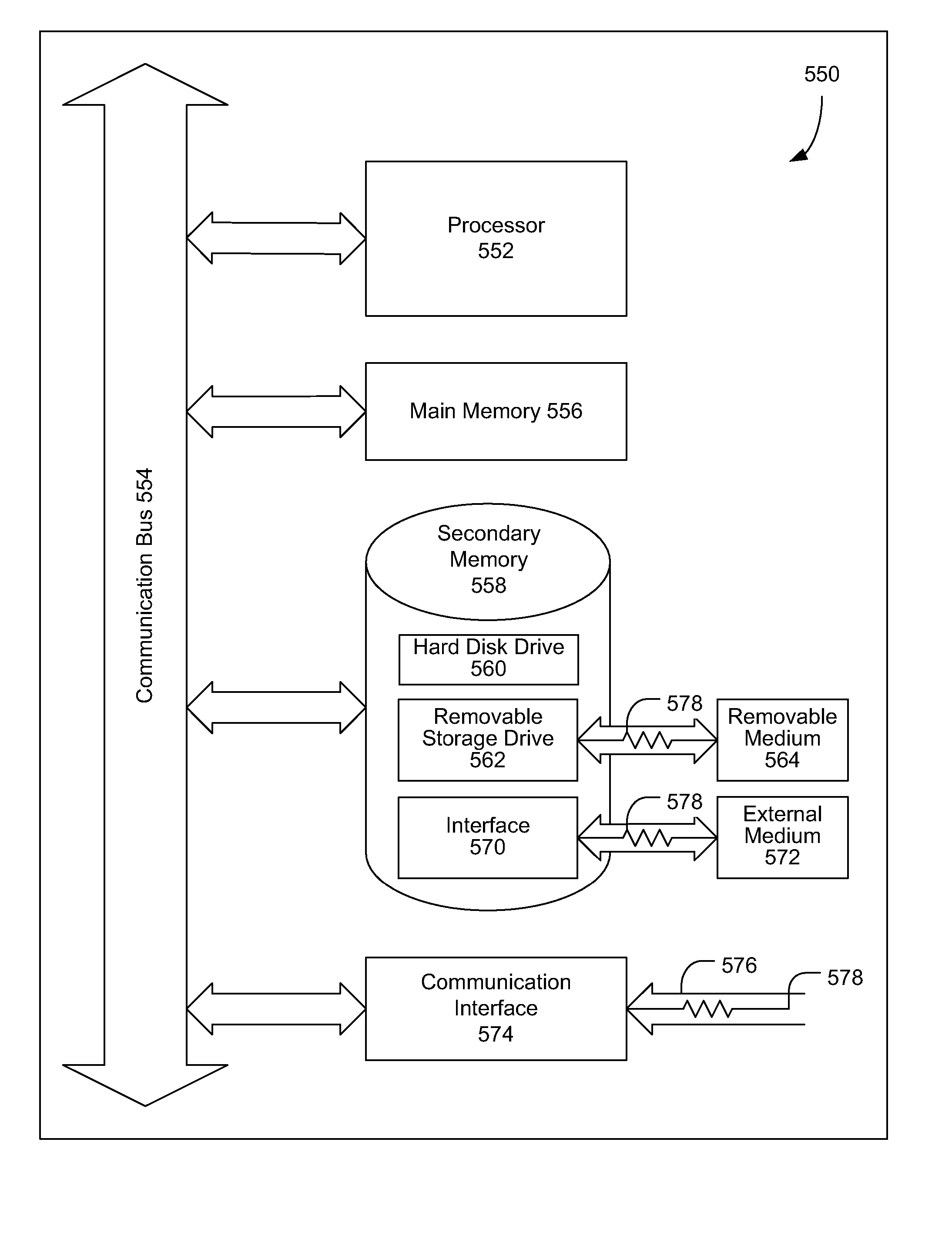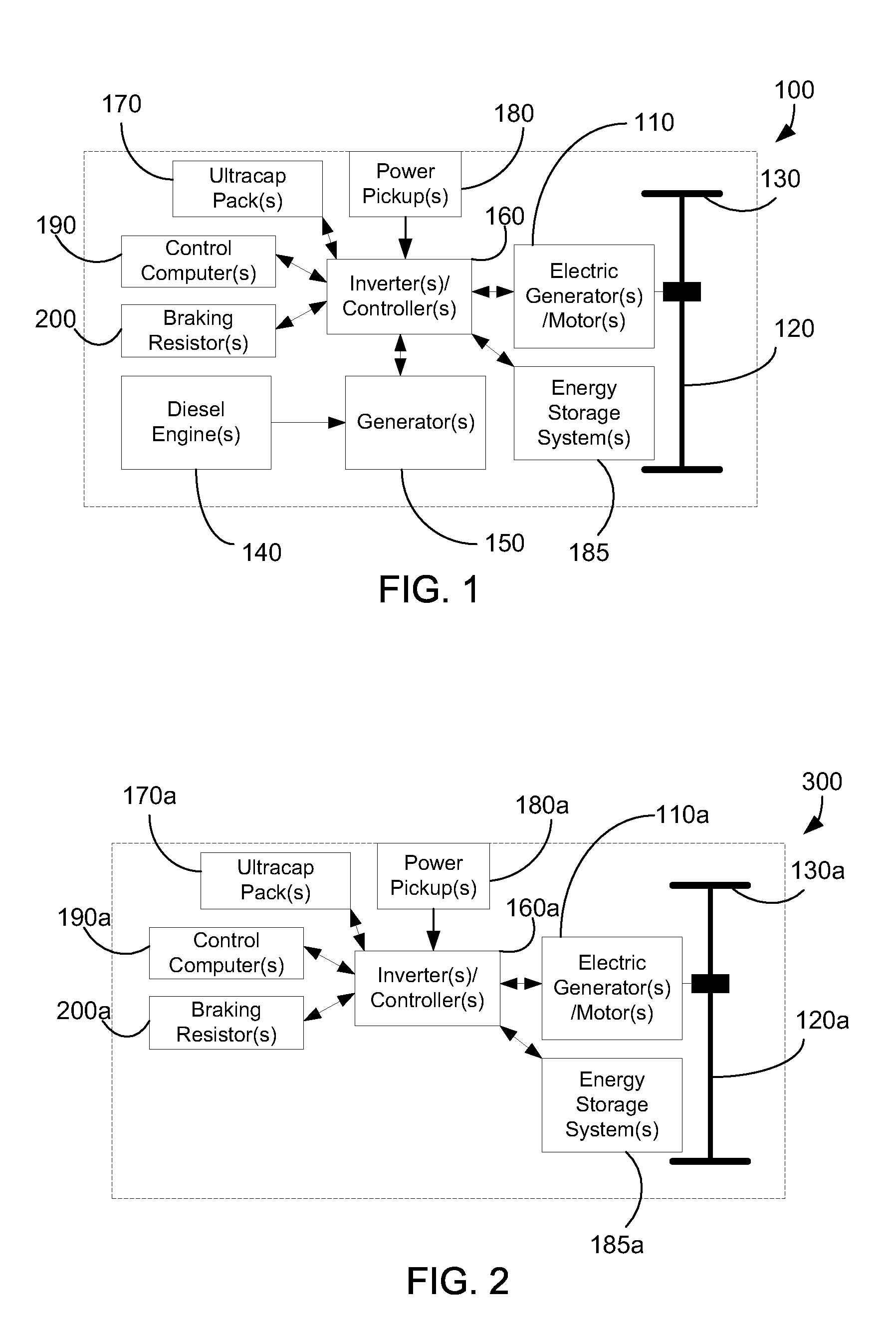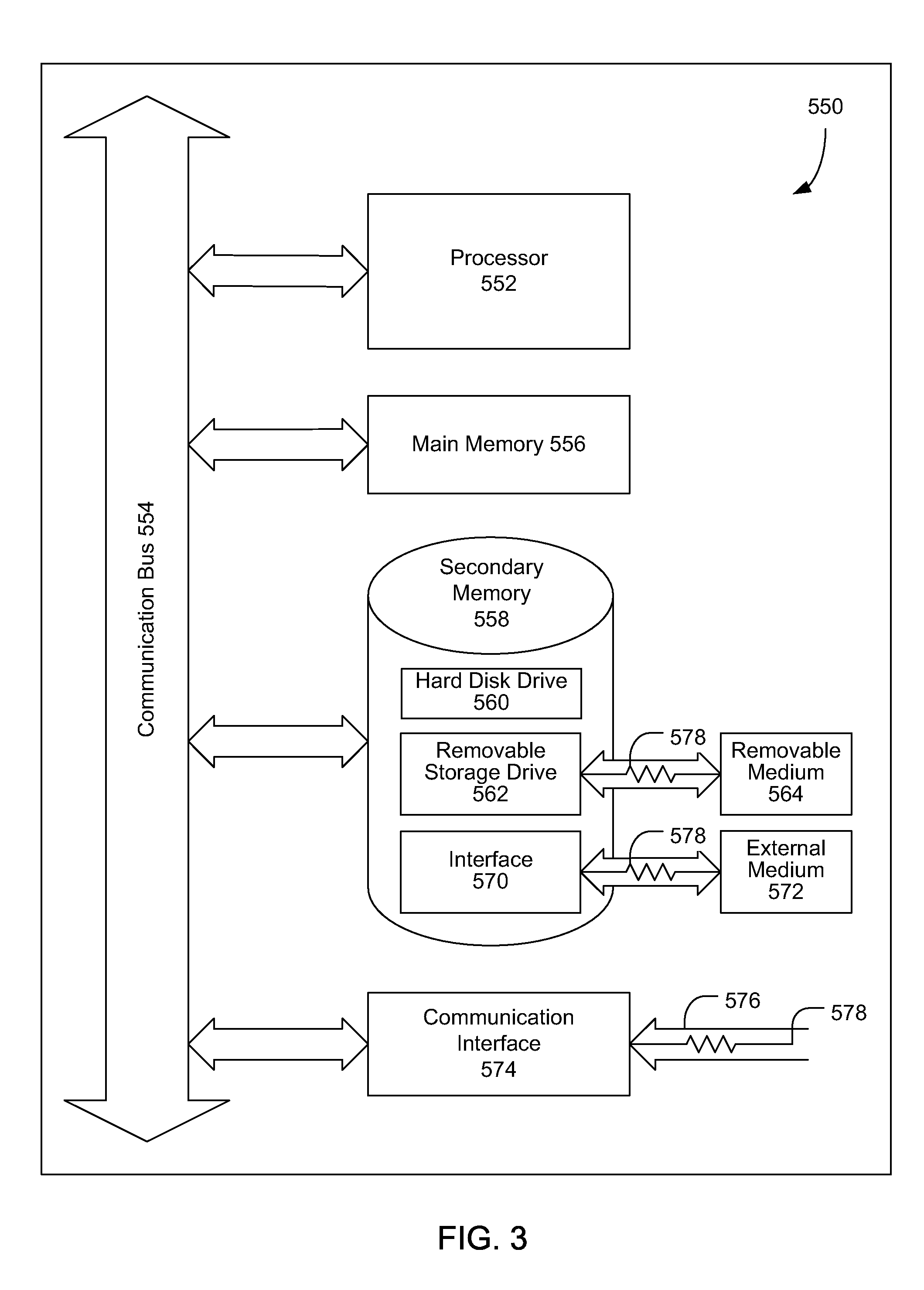Electrically Powered Rail Propulsion Vehicle and Method
a technology of electric power rail and propulsion vehicle, which is applied in the direction of propulsion parts, gas pressure propulsion mounting, process and machine control, etc., can solve the problems of dual-mode locomotive, stalling, and inevitable “gapping”
- Summary
- Abstract
- Description
- Claims
- Application Information
AI Technical Summary
Benefits of technology
Problems solved by technology
Method used
Image
Examples
Embodiment Construction
[0017] Embodiments of electrically powered rail propulsion vehicles incorporating systems and methods directed toward overcoming problems associated with “gap jumping” will be described. Examples of electrically powered rail propulsion vehicles include, but not by way of limitation, dual-mode locomotives, electric street cars, and electrically powered light rail commuter cars. As used herein, “gap jumping” refers to bridging the sections of a rail line where gaps, gaplets, or phase breaks exist in an external electrical power supply. Examples of an external electrical power supply include, but not by way of limitation, a third rail and an overhead catenary power system. Additionally, it is understood that certain aspects of the features claimed may be combined in a single unit, or separated into multiple units.
[0018] Referring to FIG. 1, depicted is a block diagram of an embodiment of a dual-mode locomotive 100 incorporating certain aspects of the invention, further described below...
PUM
 Login to View More
Login to View More Abstract
Description
Claims
Application Information
 Login to View More
Login to View More - R&D
- Intellectual Property
- Life Sciences
- Materials
- Tech Scout
- Unparalleled Data Quality
- Higher Quality Content
- 60% Fewer Hallucinations
Browse by: Latest US Patents, China's latest patents, Technical Efficacy Thesaurus, Application Domain, Technology Topic, Popular Technical Reports.
© 2025 PatSnap. All rights reserved.Legal|Privacy policy|Modern Slavery Act Transparency Statement|Sitemap|About US| Contact US: help@patsnap.com



